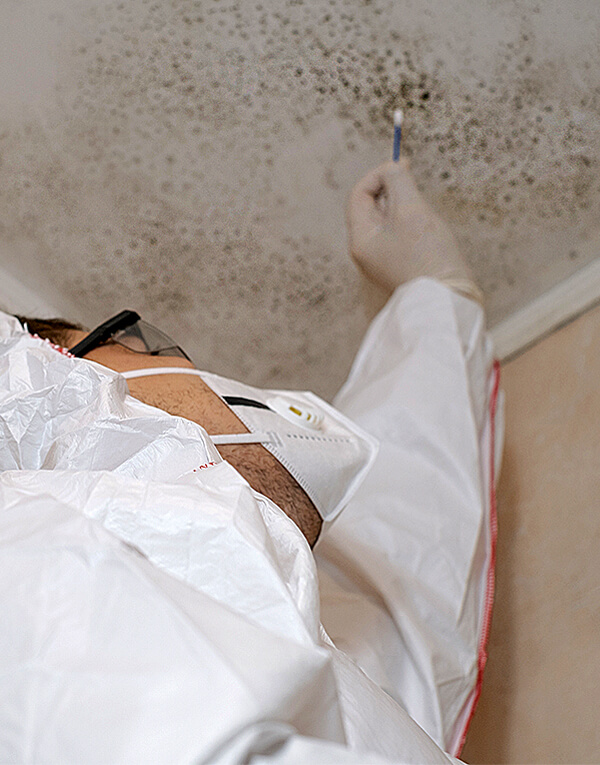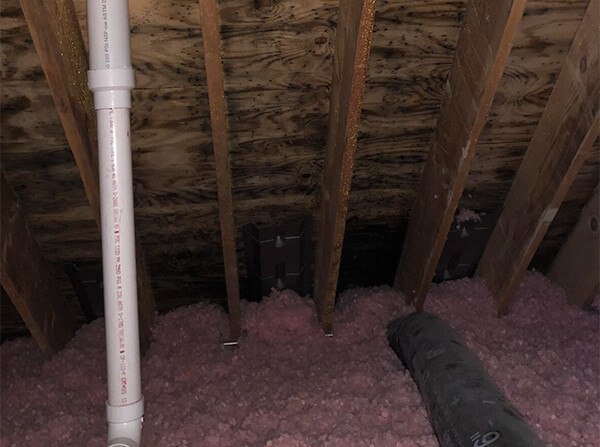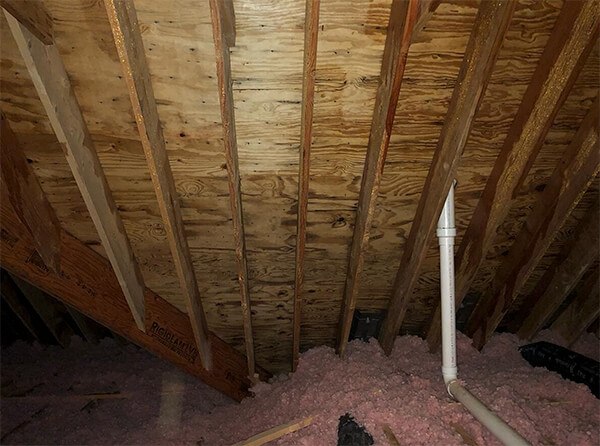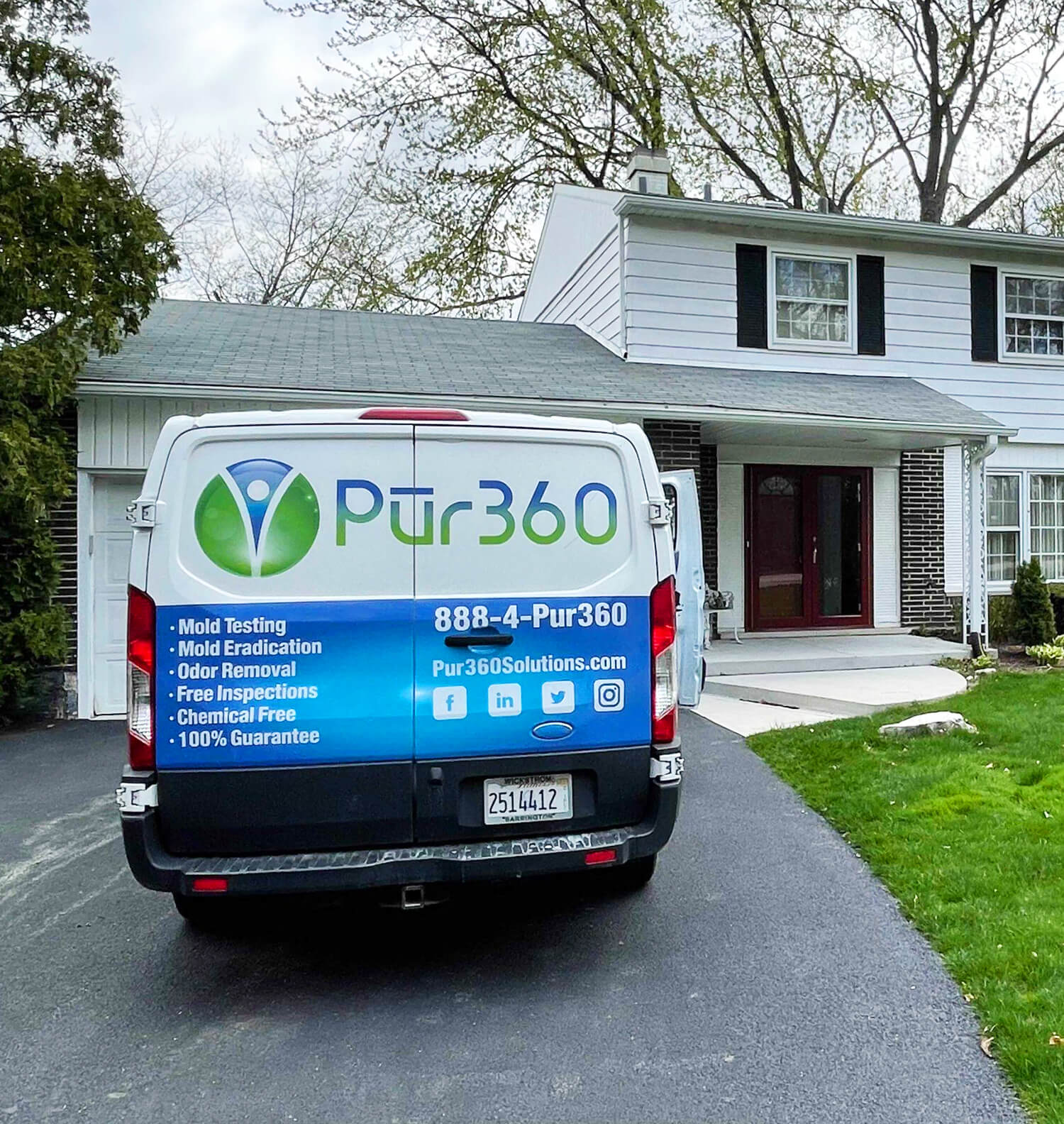
Non-Intrusive
Mold Tests
Get a clear understanding of your mold issue and remediation options. Pur360 will thoroughly test your home or business to pinpoint exactly what type of mold you have, where it is, and how to deal with it. A certified technician will inspect your areas of concern and determine the best type of mold testing—air quality sampling or surface sampling.
Mold is not always visible to the naked eye. Air quality sampling determines the amount of airborne mold spores in the tested area. Surface sampling is used to determine if a visible substance is mold and what type of mold it might be. All samples are sent to a specialized AIHA-accredited third-party laboratory for full analysis, guiding us in our quick and complete removal process.
The Pūr360 Mold Testing Process
Dark and damp places are the ideal environment for mold growth. Mold is commonly found in the grout of sinks, tubs, showers, and near leaky pipes. It also readily grows in basements, attics, and crawl spaces. Testing these various zones of your home can provide the information needed to decide how to move forward.
Our technicians test your home twice, before and after our treatment plan. Pre-treatment testing confirms the presence of mold, the type of present, and the levels of mold found on the property. Post-treatment mold testing is used to ensure any completed remediation is successful. We can return to kill any new mold that has colonized your home if necessary.
Once the pre-treatment results arrive, we will decide on the best way to remediate the mold. Our patented chemical-free method eradicates both airborne and surface mold. It permeates the fabric and eliminates mold from furnishings, walls, ductwork, and other surfaces.


Your Property’s Analysis
After the samples are collected and labeled with a serial number, they will be submitted and analyzed by an AIHA-accredited laboratory. Once the analysis is complete, the lab will send you a Certificate of Mold Analysis. The results will show the types and quantities of each mold found in the analyzed samples and a conclusion from the lab based on the levels of mold that were found.
Common Mold Types
Found In Homes
Financing Available
At Pur360, our commitment extends beyond our remediation services. Our team firmly believes that a safe and healthy environment should be accessible to everyone. We offer flexible financing options upon approval to simplify the process and help you manage this unforeseen expense.
Checking eligibility takes just a minute and won’t impact your credit score. We also provide upfront estimates so you can make informed decisions for your family or workforce. Your well-being is our priority, and our work is always backed by our 100% guarantee.

Our Guarantee
Pur360 believes in standing behind our work and process, offering our customers a 100% guarantee. If the mold or odor returns after our service is completed and the source of the issue is remedied, we will retreat your property at no additional charge per our terms and conditions.
Contact Our
Pūr360 Specialists
"*" indicates required fields